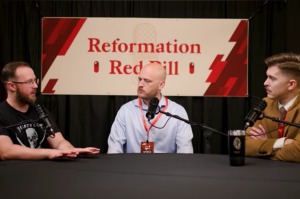Evangelical Covenant Church Counters Denominational Trends
The Evangelical Covenant Church is countering most trends facing denominations today, the president said in a recent report.
"We are growing – growing more diverse, growing more in conscience, and growing more aware of the world," said ECC president Gary Walter.
Founded in 1885 by Swedish immigrants, the ECC touts itself as a multiethnic denomination in the United States and Canada with ministries on five continents. The relatively small but growing denomination describes itself as "evangelical, but not exclusive;" "biblical, but not doctrinaire;" "traditional, but not rigid;" and "congregational, but not independent."
Attendance grew in 2008 by 6 percent to 178,997, an increase of more than 10,000 individuals. It was the 17th consecutive year of growth, Walter highlighted.
Twenty church plants were initiated over the past year and 69 church plants are under development. Half of the churches being planted are among populations of color or intentionally multiethnic. According to ECC's latest report, the number of ethnic churches grew to 186 over the past decade. They currently represent 23 percent of all congregations in the denomination.
The increasing numbers are a stark contrast to attendance in mainline Protestant denominations which have suffered losses for decades now. Many, including the Presbyterian Church (U.S.A.), the Evangelical Lutheran Church in America, and The Episcopal Church continue to struggle to diversify their predominantly white membership. Less than 10 percent of ELCA's membership is ethnic.
In other areas, more than $33 million in free care was provided by Covenant Ministries of Benevolence through our hospitals, retirement communities, and enabling residencies, and 31 projects were supported through Covenant World Relief.
Looking ahead, Walter sees continued strong momentum.
"Early indications for our 125th Annual Meeting next June point to an unprecedented number of new churches, an unprecedented number of people to be commissioned for missionary service, and an unprecedented number of clergy ordinations. Indications also point to the annual attendance survey showing growth for the 18th consecutive year," he said.
He stressed his vision: "If you want to know what I am about, it is advancing that very mission while bridging to the future generationally, multiethnically, and structurally."





























